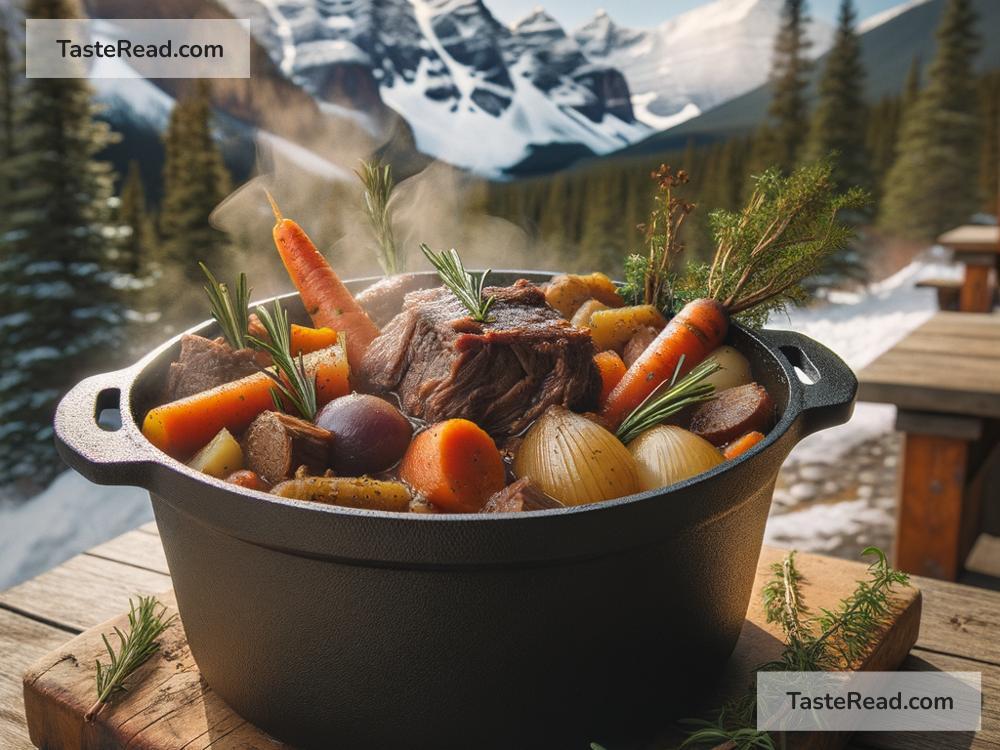Exploring the Rich Tradition of Wild Game Stews in the Canadian Rockies
The Canadian Rockies are some of the most stunning landscapes in the world. Stretching across Alberta and British Columbia, this mountain range is home to towering peaks, thick forests, sparkling lakes, and a rich history of people living in harmony with nature. One of the best ways to experience the culture of this breathtaking region is through food — and few dishes represent the Canadian Rockies better than wild game stews.
Wild game stews have been a part of the Rockies for centuries. Early settlers, fur traders, and Indigenous peoples made these hearty meals to stay warm during cold winters. Today, chefs and home cooks continue this tradition, celebrating the flavors of the land and the stories that have shaped it.
So, let’s explore what makes wild game stews special, the types of ingredients used, and why this dish has become such a cherished part of life in the Canadian Rockies.
A Taste of the Wild
Wild game stews are unique because they’re made with ingredients that come straight from the land. These stews use meat from animals that roam the forests and mountains, such as elk, deer, bison, moose, and even rabbit. Wild game meat has a distinct flavor that is earthy, rich, and slightly gamey. It’s perfect for slow cooking, which helps tenderize the meat while locking in all its wonderful flavors.
Vegetables are just as important in wild game stews. Root vegetables like carrots, potatoes, parsnips, and onions are often used because they grow well in colder climates. Herbs like thyme, rosemary, and bay leaves add depth to the stew’s flavor, while wild berries — such as juniper or Saskatoon berries — are sometimes included to give a hint of sweetness.
A Stew Full of History
The tradition of wild game stews dates back centuries in the Canadian Rockies. Indigenous peoples, including the Cree and Blackfoot Nations, lived off the land and hunted wild animals for food. They cooked meat slowly to make it tender and combined it with local plants and roots to create satisfying meals. These stews were not only delicious but also full of nutrients, helping sustain hunters and families during harsh winters.
Later, European fur traders and settlers adopted similar cooking methods as they worked and lived in this rugged wilderness. Since refrigeration wasn’t available, they relied on techniques like preserving game meat through smoking or drying, and cooking it into hearty stews. Over time, this fusion of Indigenous techniques and settlers’ culinary traditions led to the recipes we know today.
A Regional Favorite
During your trip to the Canadian Rockies, you might spot wild game stew on menus at local restaurants or lodges. This dish has become a favorite for travelers looking to experience the rustic charm of the region. Some chefs in places like Banff and Jasper National Park have put their own twist on tradition, adding spices, wine, or even maple syrup to elevate the flavor.
For the adventurous, guided culinary tours and cooking classes in the Rockies offer a chance to learn how to make wild game stew yourself. These experiences are not only fun but also a great way to get in touch with the culture and food traditions of the area. You’ll discover the care and thought that go into selecting ingredients and preparing them thoughtfully.
Making Your Own Wild Game Stew
If you’re inspired to try wild game stew at home, it’s easier than you might think! While fresh wild game meat can be hard to find, many specialty butchers and stores sell frozen cuts, like bison or venison. You can even substitute the game meat with beef or lamb if needed, though the flavor won’t be quite the same.
Here’s a simple recipe to get you started:
Ingredients:
– 2 lbs of wild game meat (elk, bison, or venison), cubed
– 2 tbsp olive oil
– 2 carrots, chopped
– 2 potatoes, diced
– 1 onion, chopped
– 3 cups beef or game stock
– 1 tbsp tomato paste
– 2 tsp fresh thyme
– 2 bay leaves
– Salt and pepper to taste
Instructions:
1. Heat the olive oil in a large pot or Dutch oven over medium heat. Add the cubed meat and brown it lightly on all sides.
2. Remove the meat and set it aside. Add the onions, carrots, and potatoes to the same pot, stirring for a few minutes.
3. Stir in the tomato paste and season with salt, pepper, thyme, and bay leaves. Pour in the beef stock and return the browned meat to the pot.
4. Cover the pot and simmer for 2–3 hours, stirring occasionally. The meat should be tender, and the flavors should blend together beautifully.
5. Serve the stew hot with a side of crusty bread for a true Canadian Rockies experience.
Why Wild Game Stews Matter Today
Wild game stews are more than just food; they’re a connection to the land, history, and culture of the Canadian Rockies. This dish is a reminder of life in a place where nature provides everything people need — from the clean mountain air to the ingredients for a hearty meal.
Whether you’re exploring Banff or Jasper, or cooking a bowl of stew at home, you’re taking part in a tradition that has been passed down for generations. So next time you want to try something new, take inspiration from the wild beauty and rich flavors of the Canadian Rockies. Wild game stew is not just a meal — it’s an experience that brings the spirit of the mountains right to your plate.


